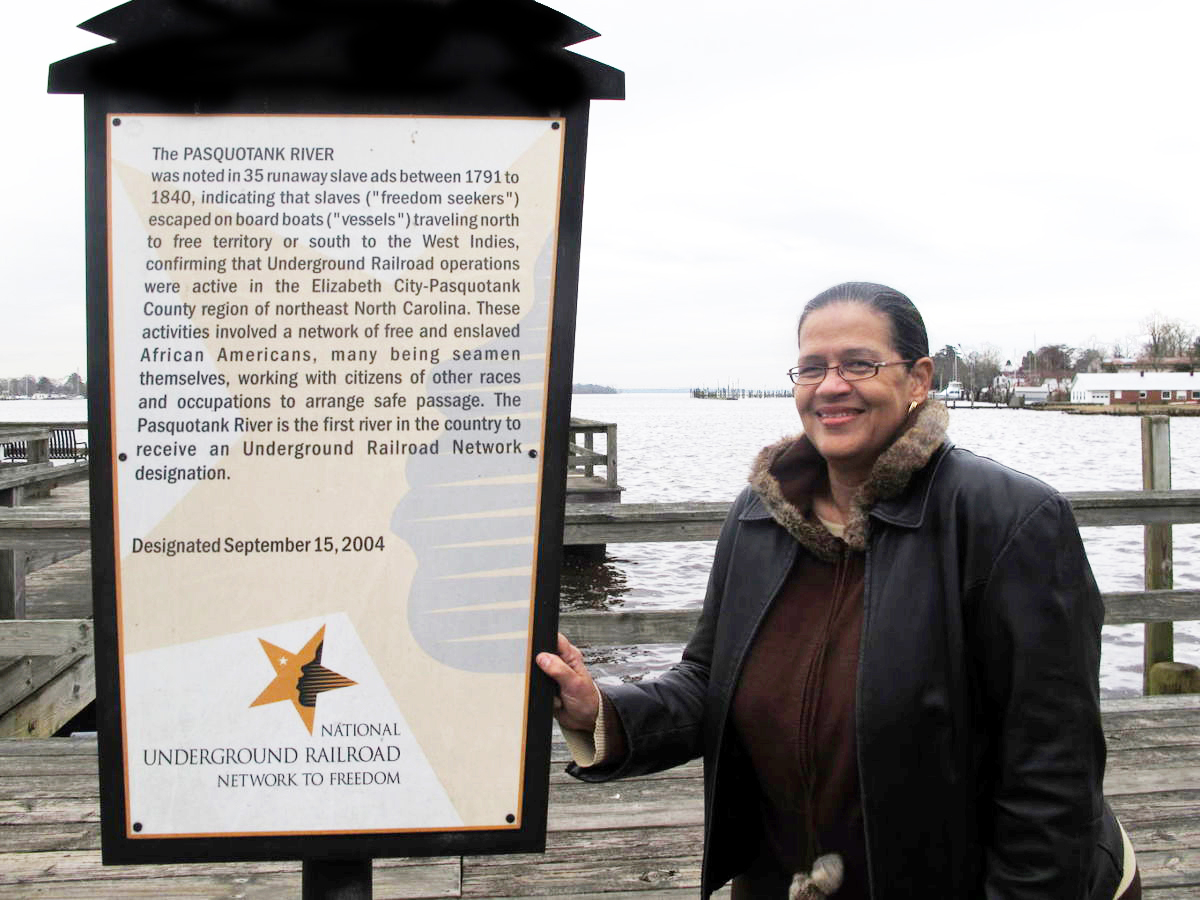In Museum of the Albemarle’s second floor gallery sits the re-assembled Proctor Smokehouse, which was initially relocated from the Proctor Farm, in the Bear Swamp area of Perquimans County (this area is considered to be one of the earliest permanent settlements of people in North Carolina), to the Newbold White House (circa 1730 – the oldest brickhouse in North Carolina). The Proctor Smokehouse was pushed over in 2003 by Hurricane Isabel. It was partially collapsed due to damage of a limb falling on the roof during the hurricane, and at that point offered to the museum to restore and exhibit. The smokehouse was assembled and marked on-site at the Newbold White House, then disassembled and transported to a building to be fumigated for pests and then reassembled and restored for exhibit purposes inside the museum. The entire break-down and reassembly process took over six months. The smokehouse is constructed of native cypress and is thought to be one of the earliest and oldest surviving examples of squared timber and fully dovetailed smokehouses used by the early settlers in the state. The architecture of the Proctor Smokehouse reveals complex and advanced construction techniques that utilized local wood and carpentry skills that were passed down from each generation prior, in essence maintaining their survival.  Smoke houses were important, as all of the early families in North Carolina had buildings similar because they reared hogs on their farms and depended on pork and other meat to carry them through the long, chilly winters until spring – when they had the opportunity to plant new crops during the warm growing season. If you expected to have pork all year long, you needed to have an enclosed smokehouse, without windows or a flue, in which a fire could be kept smoldering for a few weeks, only slowly releasing its smoke and then the flavored meat could hang safe from vermin and thieves. Early settlers cured meat in two stages: Freshly cut slabs of pork were packed in tubs of coarse salt for about six weeks, allowing the salt to draw most of the moisture form the meat. Then the salted meats were hung in smokehouses for one to two weeks and the smoke from a low fire flavored and preserved the meat. The result was dried, long-lasting, smoke flavored meat. Take a break from the heat, spend a day inside and visit the museum to check out the Proctor Smokehouse for yourself.
Smoke houses were important, as all of the early families in North Carolina had buildings similar because they reared hogs on their farms and depended on pork and other meat to carry them through the long, chilly winters until spring – when they had the opportunity to plant new crops during the warm growing season. If you expected to have pork all year long, you needed to have an enclosed smokehouse, without windows or a flue, in which a fire could be kept smoldering for a few weeks, only slowly releasing its smoke and then the flavored meat could hang safe from vermin and thieves. Early settlers cured meat in two stages: Freshly cut slabs of pork were packed in tubs of coarse salt for about six weeks, allowing the salt to draw most of the moisture form the meat. Then the salted meats were hung in smokehouses for one to two weeks and the smoke from a low fire flavored and preserved the meat. The result was dried, long-lasting, smoke flavored meat. Take a break from the heat, spend a day inside and visit the museum to check out the Proctor Smokehouse for yourself.
After visiting the museum, enjoy a self-guided tour of the Elizabeth City Aviation Trails.
 Barbara Putnam is originally from Syracuse, NY, she now lives and works in Downtown Elizabeth City and her hobbies include freelance writing and amateur photography. She shares community information, downtown activities and stories about local folks, as well as her unconventional photo pictorials - that connect the constant barrage of song lyrics playing in her head, to images she captures while out in about walking her dog, Xena, each day in Downtown Elizabeth City on her Facebook page.
Barbara Putnam is originally from Syracuse, NY, she now lives and works in Downtown Elizabeth City and her hobbies include freelance writing and amateur photography. She shares community information, downtown activities and stories about local folks, as well as her unconventional photo pictorials - that connect the constant barrage of song lyrics playing in her head, to images she captures while out in about walking her dog, Xena, each day in Downtown Elizabeth City on her Facebook page.

We were so glad to learn that Elizabeth City resident, historian, and retired educator Wanda McLean has received a special Coast Host award for her efforts to obtain federal designations that mark six northeastern North Carolina sites as part of the National Park Service’s (NPS) Underground Railroad Network to Freedom Program. ... READ MORE

We were so glad to learn that Elizabeth City resident, historian, and retired educator Wanda McLean has received a special Coast Host award for her efforts to obtain federal designations that mark six northeastern North Carolina sites as part of the National Park Service’s (NPS) Underground Railroad Network to Freedom Program. ... READ MORE